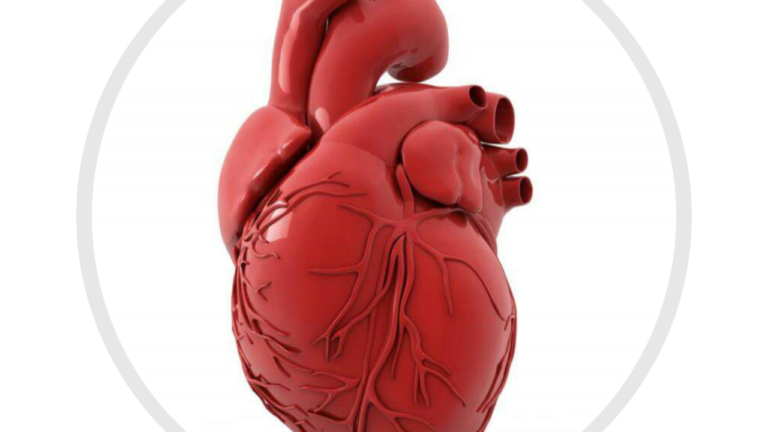
Cardiogenic shock also sometimes known as “pump failure” is a condition of diminished cardiac output that severely impairs cardiac perfusion. It reflects severe left-sided heart failure.
Pathophysiology
- Inability to contract. When the myocardium can’t contract sufficiently to maintain adequate cardiac output, stroke volume decreases and the heart can’t eject an adequate volume of blood with each contraction.
- Pulmonary congestion. The blood backs up behind the weakened left ventricle, increasing preload and causing pulmonary congestion.
- Compensation. In addition, to compensate for the drop in stroke volume, the heart rate increases in an attempt to maintain cardiac output.
- Diminished stroke volume. As a result of the diminished stroke volume, coronary artery perfusion and collateral blood flow is decreased.
- Increased workload. All of these mechanisms increase the heart’s workload and enhance left-sided heart failure.
- End result. The result is myocardial hypoxia, further decreased cardiac output, and triggering of compensatory mechanisms to prevent decompensation and death.
Classification
The causes of cardiogenic shock are known as either coronary or non-coronary.
- Coronary. Coronary cardiogenic shock is more common than noncoronary cardiogenic shock and is seen most often in patients with acute myocardial infarction.
- Noncoronary. Noncoronary cardiogenic shock is related to conditions that stress the myocardium as well as conditions that result in an ineffective myocardial function.
Causes
Cardiogenic shock can result from any condition that causes significant left ventricular dysfunction with reduced cardiac output.
- Myocardial infarction (MI)
- Myocardial ischemia
- End-stage cardiomyopathy
Clinical Manifestations
Cardiogenic shock produces symptoms of poor tissue perfusion.
- Clammy skin. The patient experiences cool, clammy skin as the blood could not circulate properly to the peripheries.
- Decreased systolic blood pressure. The systolic blood pressure decreases to 30 mmHg below baseline.
- Tachycardia. Tachycardia occurs because the heart pumps faster than normal to compensate for the decreased output all over the body.
- Rapid respirations. The patient experiences rapid, shallow respirations because there is not enough oxygen circulating in the body.
- Oliguria. An output of less than 20ml/hour is indicative of oliguria.
- Mental confusion. Insufficient oxygenated blood in the brain could gradually cause mental confusion and obtundation.
- Cyanosis. Cyanosis occurs because there is insufficient oxygenated blood that is being distributed to all body systems.
Assessment and Diagnostic Findings
Diagnosis of cardiogenic shock may include the following diagnostic tests:
- Auscultation. Auscultation may detect gallop rhythm, faint heart sounds and, possibly, if the shock results from rupture of the ventricular septum or papillary muscles, a holosystolic murmur.
- Pulmonary artery pressure (PAP). PAP monitoring may show increase in PAP, reflecting a rise in left ventricular end-diastolic pressure and increased resistance to the afterload.
- Arterial pressure monitoring. Invasive arterial pressure monitoring may indicate hypotension due to impaired ventricular ejection.
- ABG analysis. Arterial blood gas analysis may show metabolic acidosis and hypoxia.
- Electrocardiography. Electrocardiography may show possible evidence of acute MI, ischemia, or ventricular aneurysm.
- Echocardiography. Echocardiography can determine left ventricular function and reveal valvular abnormalities.
- Enzyme levels. Enzyme levels such as lactic dehydrogenase, creatine kinase. Aspartate aminotransferase and alanine aminotransferase may confirm MI.
Medical Management
The aim of treatment is to enhance cardiovascular status by:
- Oxygen. Oxygen is prescribed to minimize damage to muscles and organs.
- Angioplasty and stenting. A catheter is inserted into the blocked artery to open it up.
- Balloon pump. A balloon pump is inserted into the aorta to help blood flow and reduce workload of the heart.
- Pain control. In a patient that experiences chest pain, IV morphine is administered for pain relief.
- Hemodynamic monitoring. An arterial line is inserted to enable accurate and continuous monitoring of BP and provides a port from which to obtain frequent arterial blood samples.
- Fluid therapy. Administration of fluids must be monitored closely to detect signs of fluid overload.
Drug Treatment
Drug used may include:
- IV dopamine. Dopamine, a vasopressor, increases cardiac output, blood pressure, and renal blood flow.
- IV dobutamine. Dobutamine is an inotropic agent that increase myocardial contractility.
- Norepinephrine. Norepinephrine is a more potent vasoconstrictor that is taken when necessary.
- IV nitroprusside. Nitroprusside is a vasodilator that may be used with a vasopressor to further improve cardiac output by decreasing peripheral vascular resistance and reducing preload.
Source: Nurseslabs